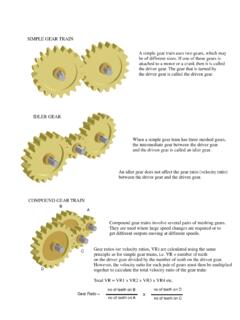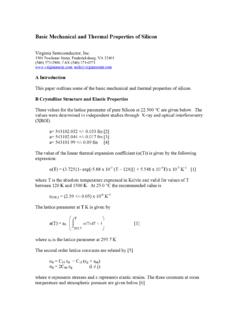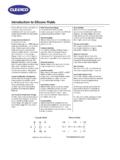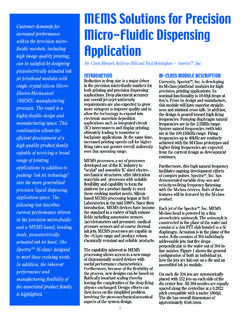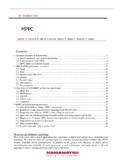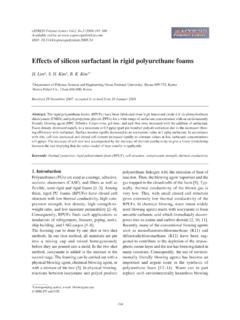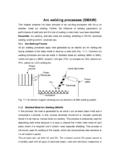Transcription of PROPERTIES AND USES OF METAL - DTOTW
1 CHAPTER 1 PROPERTIES AND USES OF METALIn the seabees, Steelworkers are the residentexperts on the PROPERTIES and uses of METAL . We layairfields, erect towers and storage tanks, assemblepontoon causeways, and construct buildings. We useour expertise to repair METAL items, resurface wornmachinery parts, and fabricate all types of metalobjects. To accomplish these tasks proficiently, onemust possess a sound working knowledge of variousmetals and their PROPERTIES . As we learn their differentproperties and characteristics, we can then select theright type of METAL and use the proper method tocomplete the job.
2 Steelworkers primarily work withiron and steel; however, we also must become familiarwith the nonferrous metals coming into use more andmore each day. As Steelworkers, we must be able toidentify various metals and to associate theirindividual PROPERTIES with their proper application primary objective of this chapter is to presenta detailed explanation of some of the PROPERTIES ofdifferent metals and to provide instruction on usingsimple tests in establishing their PROPERTIEST here is no simple definition of METAL ; however,any chemical element having metallic PROPERTIES isclassed as a METAL . Metallic PROPERTIES are definedas luster, good thermal and electrical conductivity, andthe capability of being permanently shaped ordeformed at room temperature.
3 Chemical elementslacking these PROPERTIES are classed as nonmetals. Afew elements, known as metalloids, sometimes behavelike a METAL and at other times like a nonmetal. Someexamples of metalloids are as follows: carbon,phosphorus, silicon, and Steelworkers seldom work with puremetals, we must be knowledgeable of their propertiesbecause the alloys we work with are combinations ofpure metals. Some of the pure metals discussed in thischapter are the base metals in these alloys. This is trueof iron, aluminum, and magnesium. Other metalsdiscussed are the alloying elements present in smallquantities but important in their effect.
4 Among these arechromium, molybdenum, titanium, and alloy is defined as a substance having metallicproperties that is composed of two or more elements used as alloying substances are usuallymetals or metalloids. The PROPERTIES of an alloy differfrom the PROPERTIES of the pure metals or metalloids thatmake up the alloy and this difference is what creates theusefulness of alloys. By combining metals and METAL -loids, manufacturers can develop alloys that have theparticular PROPERTIES required for a given 1-1 is a list of various elements and theirsymbols that compose metallic 1-1. Symbols of Base Metals and Alloying Elements1-1 Figure 1-1.
5 Stress applied to a rarely do Steelworkers work with elementsin their pure state. We primarily work with alloys and haveto understand their characteristics. The characteristicsof elements and alloys are explained in terms ofphysical, chemical, electrical, and mechanicalproperties. Physical PROPERTIES relate to color, density,weight, and heat conductivity. Chemical propertiesinvolve the behavior of the METAL when placed incontact with the atmosphere, salt water, or othersubstances. Electrical PROPERTIES encompass theelectrical conductivity, resistance, and magneticqualities of the METAL . The mechanical propertiesrelate to load-carrying ability, wear resistance,hardness, and selecting stock for a job, your mainconcern is the mechanical PROPERTIES of the various PROPERTIES of metals and alloys weredetermined in the laboratories of manufacturers andby various societies interested in metallurgicaldevelopment.
6 Charts presenting the PROPERTIES of aparticular METAL or alloy are available in manycommercially published reference books. Thecharts provide information on the melting point,tensile strength, electrical conductivity, magneticproperties, and other PROPERTIES of a particular metalor alloy. Simple tests can be conducted to determinesome of the PROPERTIES of a METAL ; however, wenormally use a METAL test only as an aid foridentifying apiece of stock. Some of these methodsof testing are discussed later in this PROPERTIESS trength, hardness, toughness, elasticity, plasticity,brittleness, and ductility and malleability aremechanical PROPERTIES used as measurements of howmetals behave under a load.
7 These PROPERTIES aredescribed in terms of the types of force or stress thatthe METAL must withstand and how these are types of stress are compression, tension,shear, torsion, impact, 1-2 or a combination of thesestresses, such as fatigue. (See fig. 1-1.)Compression stresses develop within a materialwhen forces compress or crush the material. A columnthat supports an overhead beam is in compression, andthe internal stresses that develop within the column (or tensile) stresses develop when amaterial is subject to a pulling load; for example, whenusing a wire rope to lift a load or when using it as aguy to anchor an antenna.
8 Tensile strength is definedas resistance to longitudinal stress or pull and can bemeasured in pounds per square inch of cross stresses occur within a material whenexternal forces are applied along parallel lines inopposite directions. Shearing forces can separatematerial by sliding part of it in one direction and therest in the opposite materials are equally strong in compression,tension, and shear. However, many materials showmarked differences; for example, cured concrete has amaximum strength of 2,000 psi in compression, butonly 400 psi in tension. Carbon steel has a maximumstrength of 56,000 psi in tension and compression buta maximum shear strength of only 42,000 psi;therefore, when dealing with maximum strength, youshould always state the type of material that is stressed repeatedly usually failsat a point considerably below its maximum strength intension, compression, or shear.
9 For example, a thinsteel rod can be broken by hand by bending it back andforth several times in the same place; however, if thesame force is applied in a steady motion (not bent backand forth), the rod cannot be broken. The tendency ofa material to fail after repeated bending at the samepoint is known as 1-2. mechanical PROPERTIES of Metals/AlloysStrengthRockwell C number. On nonferrous metals, that areStrength is the property that enables a METAL to resistdeformation under load. The ultimate strength is themaximum strain a material can withstand. Tensilestrength is a measurement of the resistance to beingpulled apart when placed in a tension strength is the ability of material to resistvarious kinds of rapidly changing stresses and is ex-pressed by the magnitude of alternating stress for aspecified number of strength is the ability of a METAL to resistsuddenly applied loads and is measured in foot-poundsof is the property of a material to resistpermanent indentation.
10 Because there are several meth-ods of measuring hardness, the hardness of a material isalways specified in terms of the particular test that wasused to measure this property. Rockwell, Vickers, orBrinell are some of the methods of testing. Of these tests,Rockwell is the one most frequently used. The basicprinciple used in the Rockwell testis that a hard materialcan penetrate a softer one. We then measure the amountof penetration and compare it to a scale. For ferrousmetals, which are usually harder than nonferrous metals,a diamond tip is used and the hardness is indicated by asofter, a METAL ball is used and the hardness is indicatedby a Rockwell B number.
